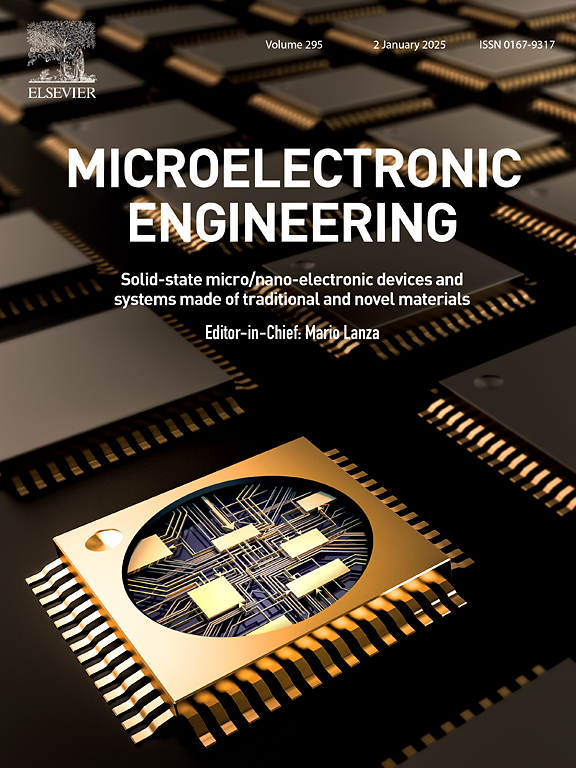An overview of wide and ultra wide bandgap semiconductors for next-generation power electronics applications
IF 3.1
4区 工程技术
Q2 ENGINEERING, ELECTRICAL & ELECTRONIC
引用次数: 0
Abstract
High-efficiency power electronic converters are imperative for future applications aiming to meet sustainability goals, as increased efficiency translates to reduced energy consumption. The emerging wide bandgap technology is a key enabler, offering better efficiency, power density, switching speed, and reduced size and weight. In view of this, we present an extensive overview of wide bandgap and ultra-wide bandgap devices for present & next-generation power electronics applications. The electrical characteristics of these devices are compared in this article, along with their present state and projected future developments. The current status of wide bandgap and ultra-wide bandgap devices' applicability for a wide range of emerging power electronics application areas, including solid-state transformers, data centers, ultra-fast electric vehicle charging stations, renewable energy generation, energy storage systems, solid-state circuit breakers, military electronic warfare systems, graphics processing units, quantum computers, and 6G networks, is reviewed. Furthermore, the expectations for these devices for the future of each of these applications are assessed, and the related future challenges and opportunities are discussed. The study shows that while SiC semiconductors will continue to dominate in high-power, high-voltage applications like transportation, grid-side converters, solid-state transformers, and renewable energy integration, GaN semiconductors will be crucial for low-voltage, high-frequency applications such as consumer electronics, power supplies, and data centers. Although not yet commercialized, ultra-wide bandgap devices like Diamond, and , with their exceptional material properties, are projected to be indispensable for high-power, high-frequency power electronics applications.

用于下一代电力电子应用的宽和超宽带隙半导体概述
高效的电力电子转换器是未来应用的必要条件,旨在满足可持续发展的目标,因为提高效率转化为降低能耗。新兴的宽带隙技术是一个关键的促成因素,提供更好的效率、功率密度、开关速度,以及更小的尺寸和重量。鉴于此,我们对目前的宽带隙和超宽带隙器件进行了广泛的概述。下一代电力电子应用。本文比较了这些设备的电气特性,以及它们的现状和预计的未来发展。综述了宽频带和超宽频带器件在固态变压器、数据中心、超高速电动汽车充电站、可再生能源发电、储能系统、固态断路器、军用电子战系统、图形处理单元、量子计算机和6G网络等新兴电力电子应用领域的应用现状。此外,对这些设备在这些应用中的未来期望进行了评估,并讨论了相关的未来挑战和机遇。该研究表明,虽然SiC半导体将继续在高功率、高压应用领域占据主导地位,如交通运输、电网侧转换器、固态变压器和可再生能源集成,但GaN半导体将在低压、高频应用领域发挥关键作用,如消费电子、电源和数据中心。虽然尚未商业化,但超宽带隙器件如Diamond和β - Ga2O3具有特殊的材料特性,预计将成为高功率,高频电力电子应用中不可或缺的器件。
本文章由计算机程序翻译,如有差异,请以英文原文为准。
求助全文
约1分钟内获得全文
求助全文
来源期刊

Microelectronic Engineering
工程技术-工程:电子与电气
CiteScore
5.30
自引率
4.30%
发文量
131
审稿时长
29 days
期刊介绍:
Microelectronic Engineering is the premier nanoprocessing, and nanotechnology journal focusing on fabrication of electronic, photonic, bioelectronic, electromechanic and fluidic devices and systems, and their applications in the broad areas of electronics, photonics, energy, life sciences, and environment. It covers also the expanding interdisciplinary field of "more than Moore" and "beyond Moore" integrated nanoelectronics / photonics and micro-/nano-/bio-systems. Through its unique mixture of peer-reviewed articles, reviews, accelerated publications, short and Technical notes, and the latest research news on key developments, Microelectronic Engineering provides comprehensive coverage of this exciting, interdisciplinary and dynamic new field for researchers in academia and professionals in industry.
 求助内容:
求助内容: 应助结果提醒方式:
应助结果提醒方式:


